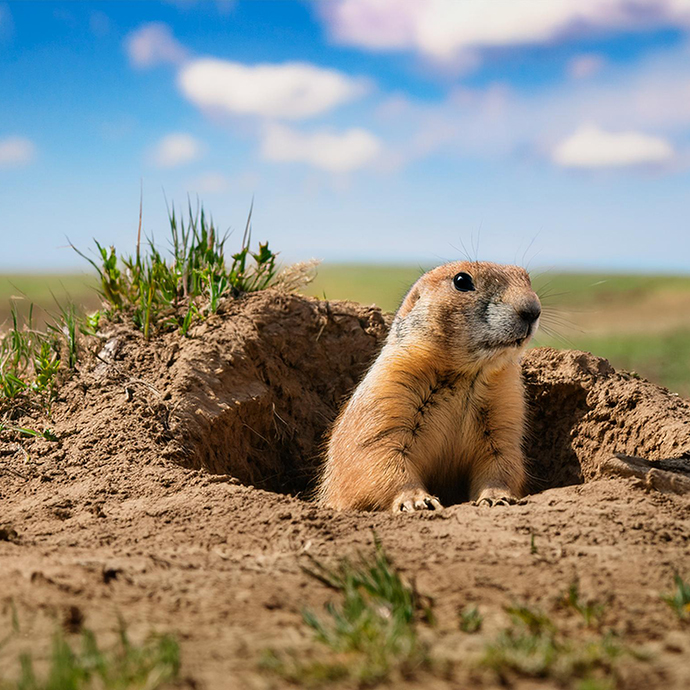Prairie Dog Management in Wyoming Rangeland
Prairie Dog Management in Wyoming Rangeland
Faculty Lead(s): Kelly Grogan
Prairie dogs and livestock consume similar forage, raising the question as to how much the existence of prairie dogs on livestock pasture affects livestock production. Despite many studies trying to answer this question, no clear answer is readily available. While prairie dog presence is associated with reduced perennial grass biomass and increased forb biomass on some sites with prairie dogs, other sites have no effect from prairie dogs. Similarly, in some sites, prairie dogs increased the digestibility of forage, which has the potential to increase absorption and mass gain, but this effect is not always found in prairie dog sites. There is also some evidence that the negative effects of prairie dogs might only occur in dry years, which might mean that control in average or high rainfall years is not economically advantageous. Research considering the effects of prairie dogs on mass gains also shows mixed results. Some studies find negative effects of prairie dogs on mass gains on some sites but not all of them. Others find no effects of prairie dog presence on mass gain in average rainfall years but do find significant reductions in drought years.
The heterogeneous conditions of previous studies contribute to the uncertainty regarding the effects of prairie dogs on forage quantity and quality and livestock mass gains. To better understand how site-specific environmental conditions may affect the relationship between prairie dog populations and livestock production, this project will include a meta-analysis of the literature. This will allow us to separate the effects of geographic region, starting vegetation, prairie dog density, livestock stocking rates, and precipitation on livestock production.
In addition to variability in the observed effects of prairie dogs, prairie dogs experience plagues that can kill over 95% of prairie dogs present. These plague events occur about every 5 to 15 years, usually when prairie dog populations are high. This provides natural population control and may lessen the need for livestock producers to invest in control.
We will incorporate the meta-analysis results into a dynamic model of livestock production on rangeland with prairie dogs present. We will simulate various scenarios of prairie dog population dynamics with plague events and incorporate future rainfall predictions under climate change. Through these simulations, we will determine the scenarios for which prairie dog control, through the use of rodenticides, is economically optimal. We will also consider the ecosystem service benefits provided by prairie dogs and compare individually optimal decisions with socially optimal decisions. The results of this modeling will be used to create a decision-support tool for producers to guide their prairie dog control decisions.
APPLY TO OUR GRADUATE PROGRAM!


